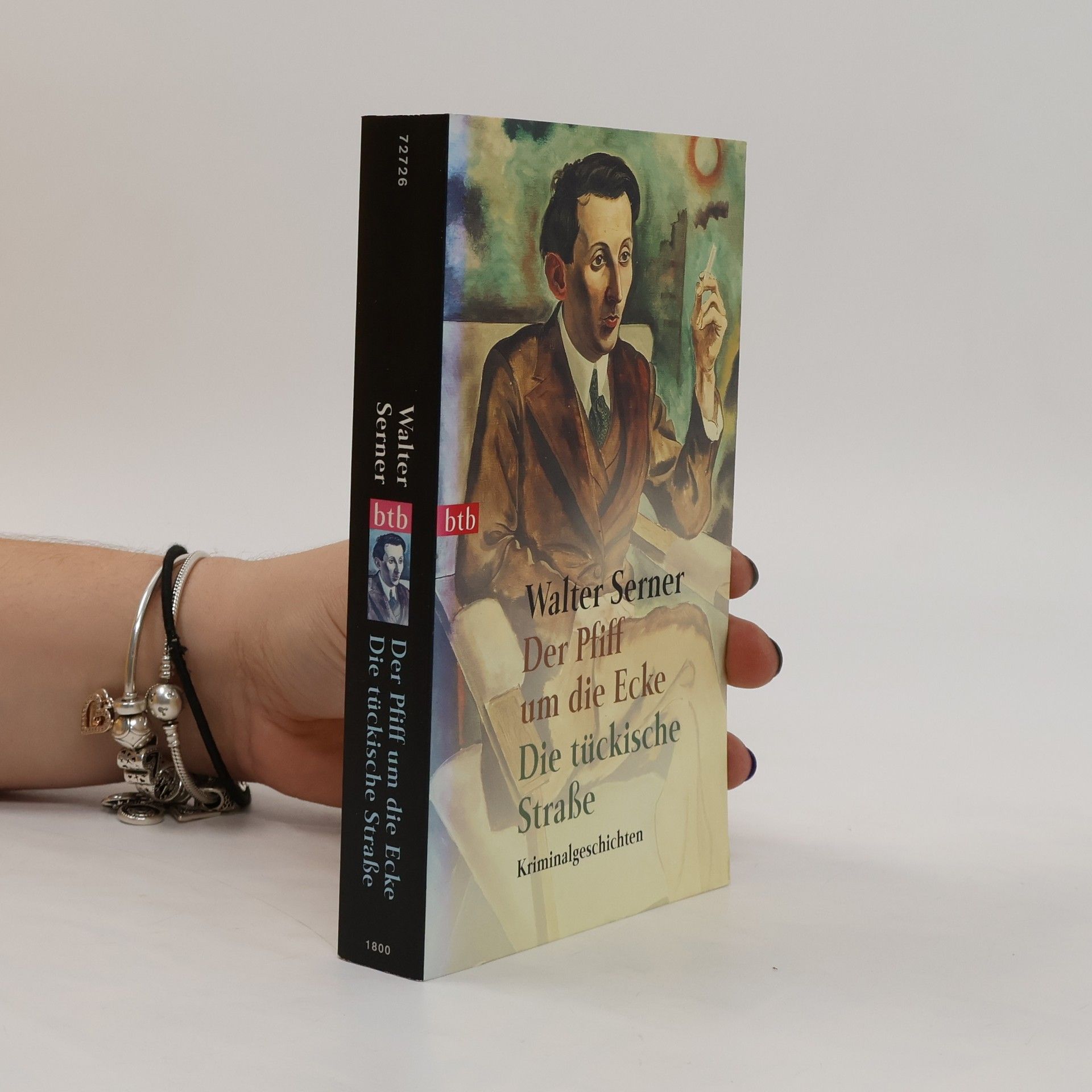The German contribution to the Dada movement, this collection brings together three texts, translated into English for the first time, which were essential for the very inception of the movement and which influenced its future development. Included is the only Dada novel, Tenderanda the Fantast, by the movement's founder, Hugo Ball.
Walter Serner Livres
Walter Serner fut un écrivain et une figure clé du mouvement Dada, connu pour son approche expérimentale de la littérature. Ses œuvres plongent dans des situations extrêmes et les aspects les plus sombres de la psyché humaine, avec souvent une critique acerbe de la société bourgeoise. Le style de Serner se caractérise par d'audacieuses expérimentations linguistiques, des structures de phrases non conventionnelles et un détachement ironique marqué. À travers son écriture, il visait à démanteler les notions conventionnelles d'art et de réalité, suscitant de fortes réactions émotionnelles chez ses lecteurs.







Verheißungsvoll beginnt Walter Serner seine Geschichten rund um allerhand Detektive, Spitzel und Hochstapler, und voller Pointen und überraschender Wendungen führt er sie zu einem verblüffenden Ende. Die Prosastücke dieses Buches funkeln vor Sprachlust und Erfindungsreichtum.
Walter Serner (1889-1942) war ein Essayist, Schriftsteller und Dadaist. Nach seiner Abkehr von der dadaistischen Bewegung wandte sich Serner dem Schreiben von Kriminalgeschichten zu. Sein Roman Die Tigerin erschien 1925 (verfilmt von Karin Howard 1992) und sorgte aufgrund des zwielichtigen Milieus und der sexuell offensiven Sprache für einen kleinen Skandal. Nur ein Gutachten von Alfred Döblin verhinderte, dass das Buch der Zensur zum Opfer fiel. Seine Erzählsammlung Der Pfiff um die Ecke wurde zeitweise beschlagnahmt. Sein nächster Erzählband, Die tückische Straße erschien zuerst als Privatdruck, ebenso sein "Gauner-Stück" Posada oder der große Coup im Hotel Ritz, das am 6. März 1927 zum ersten (und letzten) Mal aufgeführt im Berliner Theater am Zoo. Das Rendez-vous mit dem Goldzahn Die Clincher Box Las Tortilleras Narziss Die verhängnisvolle Camel Das Loch in der Weste Übersee Wong Fun Psycho-Dancing The mistery of Tottenham Court Road Auf dem Rummelplatz Deiters Putsch Im Hotel Fleißig Diluvialzeit Homingmans schönste Komposition Das Fest in der Via Alfeo Irma Das denkwürdige Gespräch Messalina - eine...
Bei diesem Werk handelt es sich um eine urheberrechtsfreie Ausgabe. Der Kauf dieser Kindle-Edition beinhaltet die kostenlose, drahtlose Lieferung auf Ihren Kindle oder Ihre Kindle-Apps.
Walter Serner: Letzte Lockerung manifest dada Edition Holzinger. Taschenbuch Berliner Ausgabe, 2016 Durchgesehener Neusatz bearbeitet und eingerichtet von Michael Holzinger Entstanden 1918. Erstdruck 1920 Hannover, Paul Steegemann. Anton van Hoboken gewidmet. Herausgeber der Reihe: Michael Holzinger Reihengestaltung: Viktor Harvion Umschlaggestaltung unter Verwendung des Bildes: Marsden Hartley, Abstraktion, um 1914 Gesetzt aus der Minion Pro, 11 pt.
Das Paris der 1920er: Fec, der kleine Gelegenheitsgauner und Bichette, die bessere Nutte, tun sich zur Zweckgemeinschaft zusammen; alles ist erlaubt, einzige Bedingung: Die Liebe darf beiden nicht dazwischenfunken. Zuerst geraten sie in einen taumelden Kreislauf von Liebe und Obsession, von Lügen und Intrigen, von Bars und Stundenhotels. Aber dann fährt Ganovenpärchen an die Côte d'Azur, um dort reiche Beute zu machen: Sie wollen ihren Opfern Schweigegeld abpressen. Doch es kommt, wie es kommen muss, die Liebe macht ihnen einen Strich durch die Rechnung. Walter Serner ist der "Maupassant der Kriminalistik" [Theodor Lessing] 1. Auflage (Überarbeitete Fassung) ISBN 978-3-95418-960-1 (Kindle) ISBN 978-3-95418-959-5 (Epub) ISBN 978-3-95418-961-8 (PDF) Null Papier Verlag
Die Tigerin
Eine absonderliche Liebesgeschichte : Kriminalgeschichten
German
Bei diesem Werk handelt es sich um eine urheberrechtsfreie Ausgabe. Der Kauf dieser Kindle-Edition beinhaltet die kostenlose, drahtlose Lieferung auf Ihren Kindle oder Ihre Kindle-Apps.



